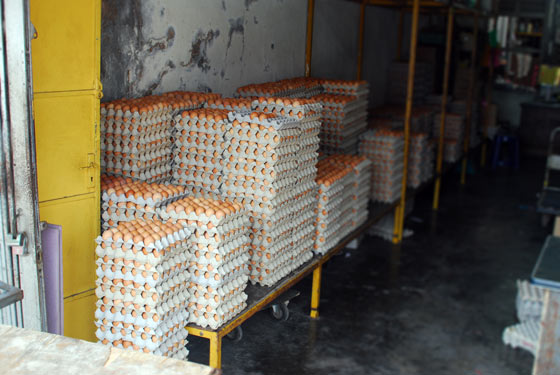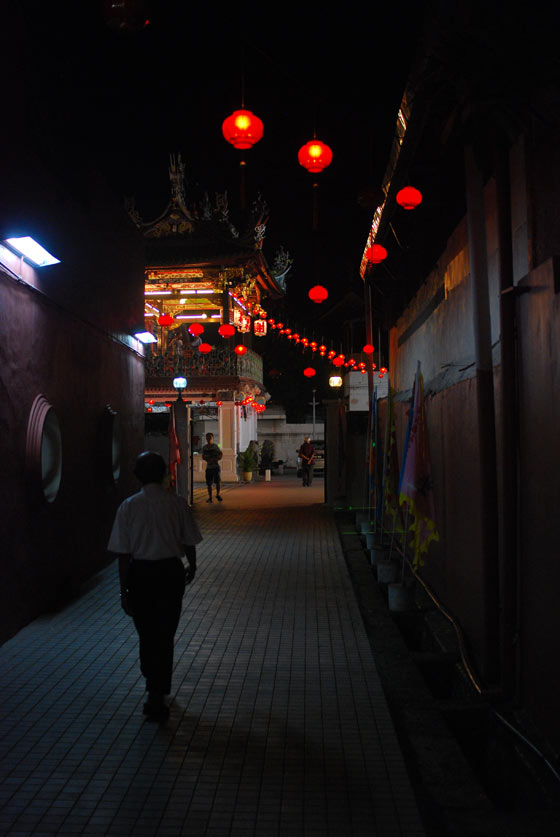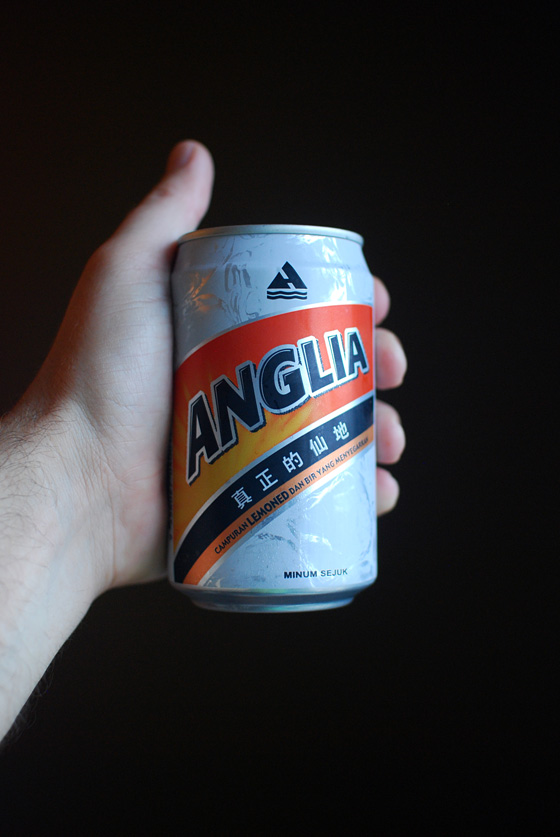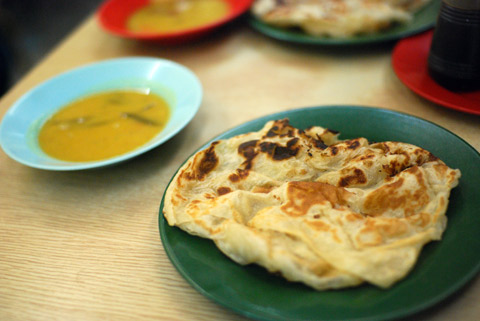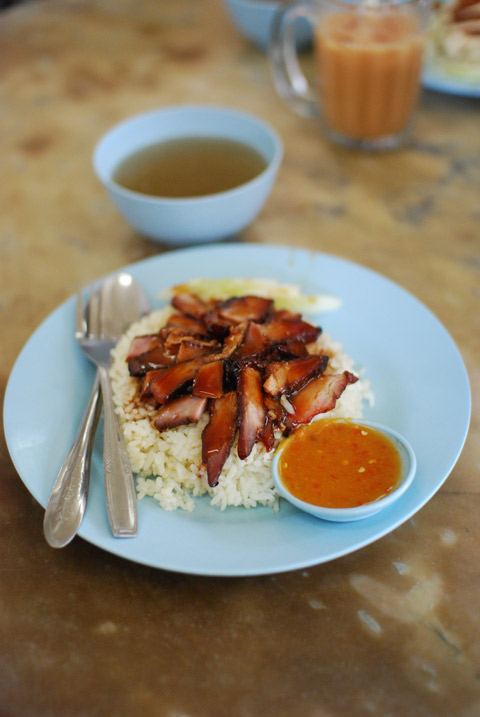
Self portrait with nasi campur at Restoran Siti Fatimah, Langkawi
Post Category → Malaysia
How to introduce your two year old to Malaysian street food.
1. Buy a street food.
2. Hand over the chopsticks.
So, I had a kid and thought that I should mention it for when she’s old enough to ask about why she’s not in any of the blog posts, which will be soon now that she can negotiate devices with screens and understands conceptually that the Internet exists, and it’s where Bananas in Pyjamas live. I’d been avoiding it until now so that I could hold back the unrelenting tide of parent blogger PR spam. If you think that I don’t care about your new seasons menu, imagine how little I care that your pram comes in a new shade of Viktor&Rolf.
There’s probably a few intervening steps in introducing you child to street food, such as trying to explain how she can use chopsticks or eat chilli, but frankly, I have no idea how any of that happened. It’s not like I’ve been recording every moment of this.
As much as I’d like to say this is why I’ve slowed down my writing, it’s really not. Food blogging is of as little importance as it ever was. It’s worth reading Jess Ho’s piece about breaking up with her other blog. I feel the same, although they’re also the perverse reasons that I push on with it.
Eggs, Penang
The logistics of food is endlessly interesting when you step outside the reach of the robotic hands of supermarket distribution. Along with the produce, transport is what adds a degree of regional variation to most markets. One of my most enduring memories of one market in Cambodia is seeing a Toyota Camry, whose backseat had been hastily waterproofed with plastic tarpaulins, filled to the ceiling with live snakehead fish.
There are certainly more preferable ways to transport food, but there is no perfect means to transport food, which is why the humble cargo bike (below) can continue to compete with every other vehicle on Penang to transport eggs.
Whenever I see a bike like that, I just want to follow it.
Entrance of Seh Tek Tong Cheah Kongsi, Penang
Anglia Shandy
“Brewer”:Guinness Anchor Berhad (Diageo/Asia Pacific Breweries-Heineken).
One of my dreams was to become Asia’s leading reviewer of canned shandy, the worst thing to happen to beer since the discovery of shandy. Today that dream is horribly realised.
GAB Says: “The real shandy. Malaysia’s pioneer shandy, since 1978, recently took on a new and refreshing image and look, giving it a more exciting, cooler and fun image while continuing to provide its drinkers a unique and refreshing drinking experience. It is a refreshing blend of fizzy lemonade and beer to be enjoyed on all occasions.”
I say: I hoped that this was a shandy that was built for Malaysia’s pioneers, a drink that smelled faintly of the keropok that injured Tunku Abdul Rahman as a child and Tan Cheng Lock‘s rubber business. The only pleasant feature of this drink is that it pours a beautiful golden amber, the nicest shade of soft drink that I have ever seen. Nose of lemon dishwashing liquid and malt is obliterated by a smoked orange finish that acridly lingers in your throat.
If Anglia pioneered something, that thing would be: Burnt Fanta.
ABV: 1%
Satay
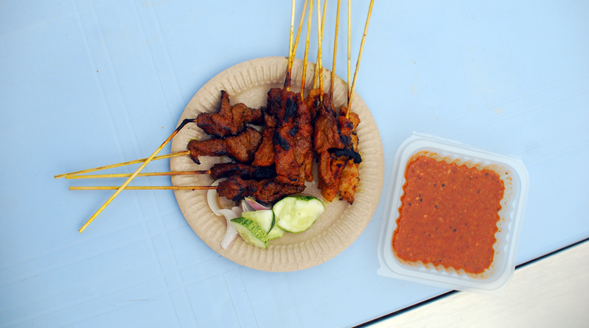
Chicken satay from Gurney Drive, Penang
Tek Sen, Penang
This is deep-fried pieces of boneless chicken coated in a crispy shell of batter, covered in mayonnaise straight from the jar. It’s a dish that the world’s food writers conveniently overlook when they heap well-deserved praise on restaurant Tek Sen in Penang because it doesn’t fit the clean narrative of tradition or authenticity that drives the de facto view of Malaysia through the lens of food magazines. There is no clear tradition of mayonnaise in Malay-Chinese cuisine but quite clearly, there should be. Tek Sen is licensed to drive that trend.
I didn’t eat at Tek Sen the last time that I was in Penang because it was too expensive. In hindsight that looks crazy, but four years ago, I was travelling around Asia on a budget of roughly $20 a day for two including transport and accommodation. It seems like a longer time ago. Spending $10 on a single meal was a tough decision when I could graze through several bowls of laksa a day for the same price. Now I spend more than $10 a day keeping myself sufficiently caffeinated. I eat at restaurants where $10 isn’t even an appropriate tip per person. The old me is probably horrified at the new me.
Maybe that is the only sign of being a moderately functioning adult.
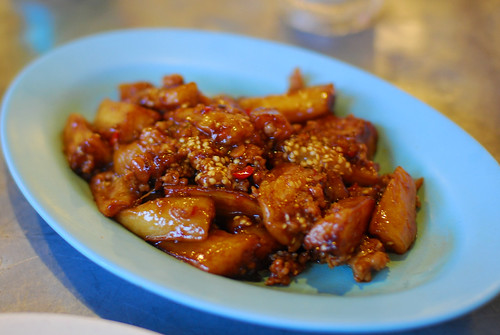
Eggplant with fermented bean paste
Four years on and the island is looking busier, more gentrified. The traffic is heavier and more Chinese shophouses are fenced off for renovation. The now World Heritage-listed core of Georgetown feels like it is beginning to take a similar path to Luang Prabang, where the centre of the city begins to hollow out for the needs of tourists, taking with it the atmosphere that tourists came for in the first place. There’s more buildings preserved as boutique hotels and the word “artisan” now attached to batik or carvings or basketry. It is still the greatest place on earth to eat on a fistful of dollars.
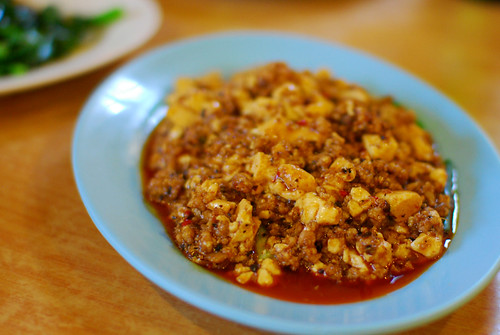
Mapo tofu has a relatively light touch of the numbing Szechuan mala sauce which lets the smoke from the wok work its way through.
Externally, Tek Sen remains much the same, a collection of reflective stainless tables encircled by battered metal stools within an airy, tiled shophouse. The menus smell like graphic design and are clearly translated into English, a small nod to gentrification.
Penang’s a different place when you’re meaningfully employed. I ate Tek Sen’s double-cooked pork on multiple occasions. The best $4 you’ll ever spend. The double-cooked pork – siew yuk – is sticky and sweet batons of pork belly, stirfried to add a dose of smoke. This is the only pork dish I’ve eaten where I’m keen to lick the thin slick of pork fat from the bottom of the plate. As much as this is the dish that drives people to Tek Sen rather than their liberal ideas about deep-frying and egg emulsions, Tek Sen has a menu where you can’t make mistakes.
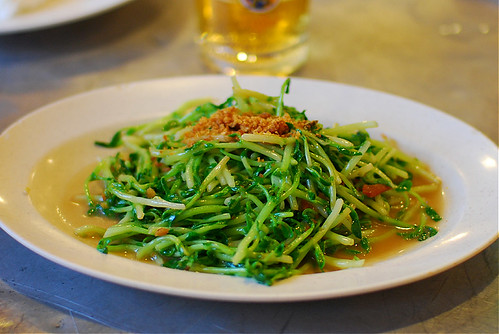
Pea shoots with dried, salted fish. It’s umami-salty and satisfying.
Eat everything. The small plates mean that even a party of two can easily work through five dishes. Four people could eat almost half the menu.
Location: 18-20 Carnarvon Street, Georgetown, Penang
Parachute Foodblogging 2: Restoran Nasi Kandar KL
Kuala Lumpur is the perfect town for stopover eating: parachuting into town for the few hours between flights. I’ve done it once before but this time was a bit more of a nostalgia trip. For me, breakfast in KL is synonymous with nasi kandar; Malaysian Tamil Muslim food from a cheap restaurant, leaden curries matched with feather-light roti.
Restoran Nasi Kandar KL on Jalan Tun Tan Cheng Lock, just around the corner from Petaling Street is by no means the greatest nasi kandar in town, but it feels like my nasi kandar. The grime-streaked yellow facade seems unchanged and the Indian Malaysian guy at the front counter still seems overwhelmingly pleased to see me. It was just between the cheap backpacker joint where I spent the most of my time in Malaysia and Pasar Seni station. The obvious place to stop on the way to eat somewhere else every day. They do an excellent roti canai: the accompanying curry is passable but the roti is spot on: buttery, both fluffy and elastic. It’s some of the best eating in transit that can be done.
Just in case roti is not enough, there is a decent kopitiam across the road with the usual jumble of vendors: a roast meat guy, various noodle soups and fried noodles stands that encircle a coffee shop. I hit up the pork and rice just in preparation for Cambodia.
Fatty rice but dry pork. I should have had that third roti.


